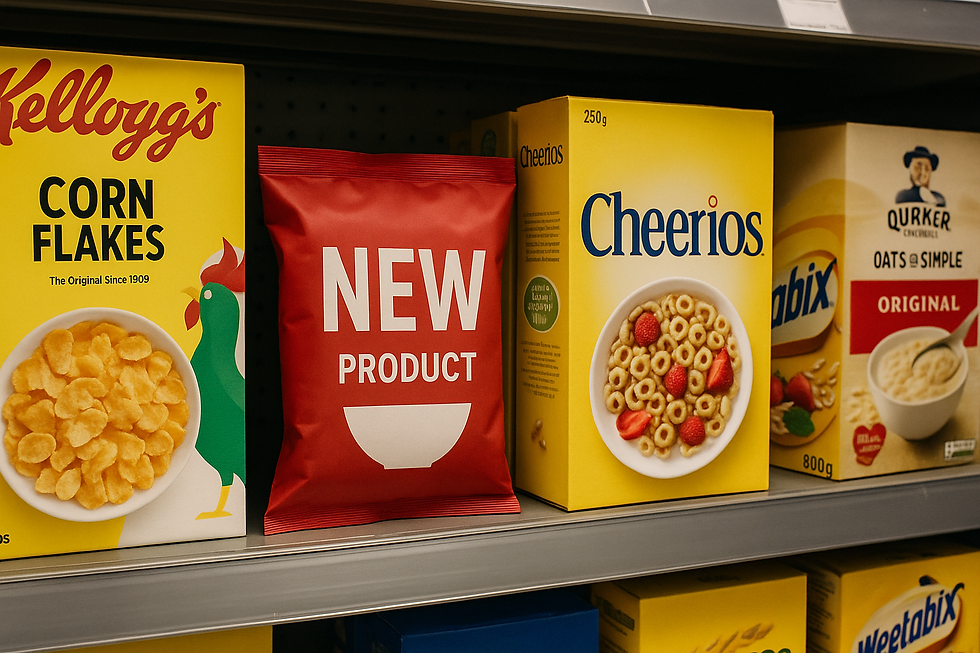Winning At The Shelf
- 30 sep.
- 2 min läsning
How Strategic CDT Thinking Is Used To Guide Shoppers and Leverage Brand Strength...

In today’s competitive retail landscape, visibility isn’t just a metric—it’s a battleground. Nutrilon (a leading baby milks brand, a.k.a. Aptamil) demonstrates a powerful example of how strategic placement aligned with shopper decision-making can turn the shelf into a silent salesperson.
This isn't just a well-stocked section—it’s a brand fortress. The brand has created a brand block that dominates the shelf with unified, easily navigable packaging. This consistent blue wall of products doesn’t just catch the eye; it guides the hand. By clustering the full range together—clearly segmented by stages (1 to 5)—shoppers are naturally led through the Customer Decision Tree (CDT) in a way that feels intuitive and effortless.
Making It Easier for the Shopper
CDTs help decode how shoppers think at the shelf—what they consider first, what alternatives they weigh, and how they simplify complex decisions. Baby Milks Category & Brand decisions often are made at home and the brand block in this picture makes it easier for shoppers to pick up the right brand at-shelf. Nutrilon removes friction from the decision process. A shopper isn’t overwhelmed with choices—they’re guided.
By owning the decision points on the CDT with a strong shelf presence, Nutrilon also blocks competitors. It minimizes the space (both physical and mental) for rival brands to intrude. And facilitates in-brand switch in case of unforeseen specialty needs (e.g. child's allergies).
The result is twofold: increased conversion within the brand, and greater loyalty as shoppers feel confident navigating the Nutrilon ecosystem from early infancy through toddlerhood.
Why We Should Care
When we understand the CDT and build our shelf and communication strategy around it, we create systems that help shoppers decide faster and feel better about their choices.
At its best, CDT thinking becomes a strategic tool: it shapes planograms, packaging, messaging, and even innovation pipelines. It’s not about selling a product. It's end-to-end shopper-centric design in action.



